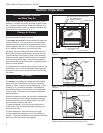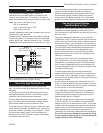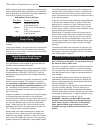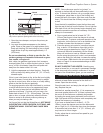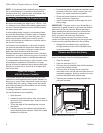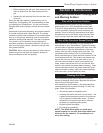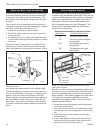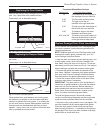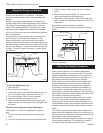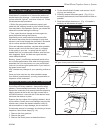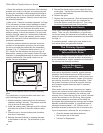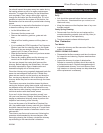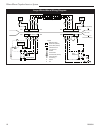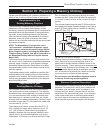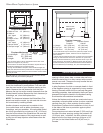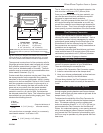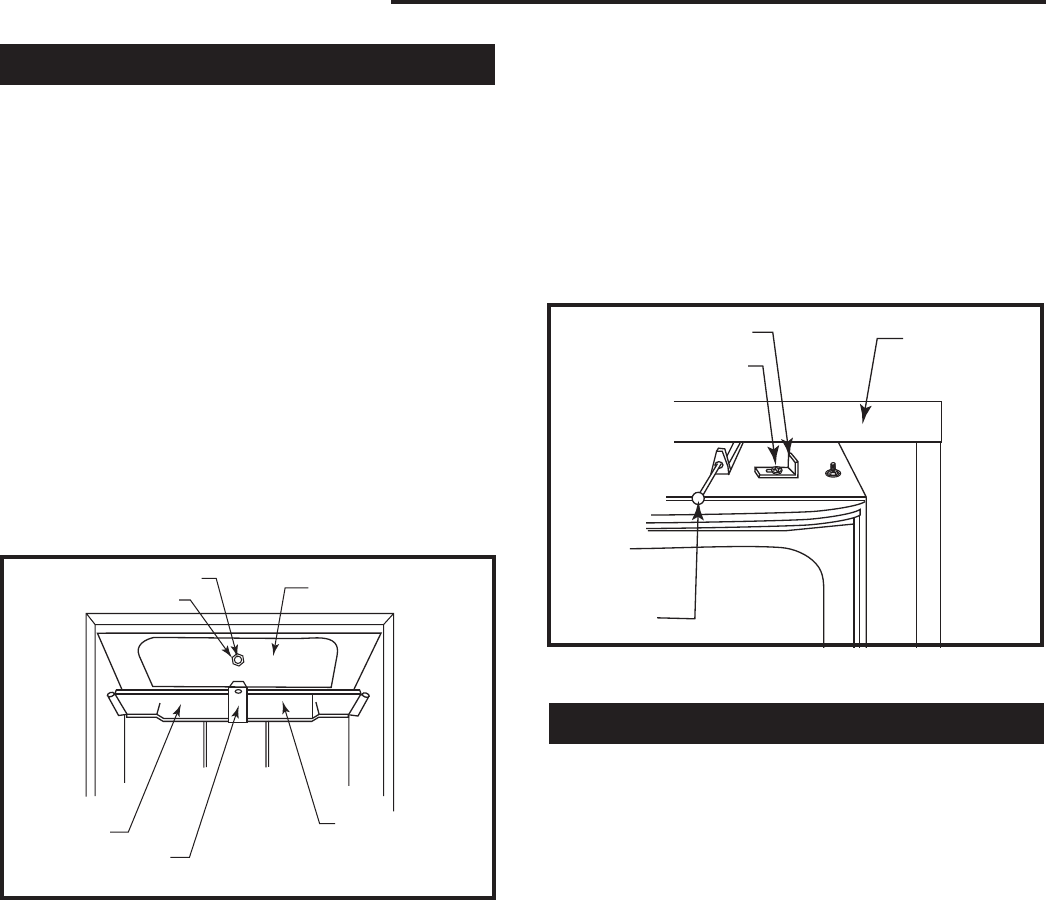
12
WinterWarm Fireplace Insert or System
2000941
Adjust the Damper as Needed
Examine your WinterWarm’s damper after the first 50
hours of use and adjust it if necessary. Thereafter,
check the damper at least once a year and adjust as
needed.
Both fine and coarse adjustments to the damper are
possible. Begin with the fine adjustment, which modifies
the pressure on the damper plate directly; it will take
care of most sealing problems. Proceed to the coarse
adjustment, which adjusts the pressure at the damper
latch, only if you cannot achieve a satisfactory seal with
the fine adjustment.
To inspect how well the damper seals, first make sure
that the fire is out and that the WinterWarm is cool.
Open the front door, and close and lock the damper.
Visually inspect the seal between the damper plate and
the damper frame; there should be no gaps. Now, push
gently on the damper — there should be some give, but
no rattle. If there is a gap in the seal or a rattle, adjust
the damper.
3. With the damper open, loosen the latch retaining
screw.
4. Move the latch approximately 1/8” (3mm) to the
right, and retighten the retaining screw.
5. Close and lock the damper, and check for gap and
rattle. Adjust the set screw as described under “Fine
Adjustment.”
Repeat the coarse adjustment if necessary.
For further assistnce, contact your Vermont Castings’
Dealer.
FP1080
Winter Warm
Damper view
3/28/01 djt
Damper Adjustment Screw
Damper
Lock Nut
Left
Throat Half
Throat Retainer Clip
Right Throat
Half
FP1080
Fig. 12 A view of the damper as seen through the front door.
Try the Fine Adjustment First
1. Open the door.
2. Close and lock the damper.
3. Locate the damper adjustment set-screw in the cen
-
ter of the damper plate, and loosen its lock nut.
4. Turn the set-screw 1/4 to 1/2 turn clockwise.
5. Check the damper seal for gap or rattle.
6. When the set screw position provides a good seal,
tighten the lock nut. Be careful not to overtighten the
set screw.
Use the Coarse Adjustment Only If Necessary
Follow Steps 1-3 of the fine adjustment procedure,
then;
1. Turn the set screw counter-clockwise several full
turns.
2. Lift off the mantel piece to expose the damper latch.
FP1081
WinterWarm
damper
adjustment
3/28/01 djt
Damper Latch
Latch Retaining Screw
Shroud
Damper
Control
Rod
FP1081
Fig. 13 With the mantel removed, the damper latch is ex-
posed for adjustment.
Care of the Catalytic Combustor
This wood heater contains a catalytic combustor, which
needs regular inspection and periodic replacement
for proper operation. It is against the law in the United
States to operate this wood heater in a manner incon-
sistent with operating instructions in this manual, or if
the catalytic element is deactivated or removed.
Under normal operating conditions, the catalytic com-
bustor should remain active for two to six years (de-
pending on the amount of wood burned). However, it
is important to monitor the combustor periodically to
ensure that it is functioning properly, as well as to de-
termine when it needs to be replaced. A non-functioning
combustor will result in a loss of heating efficiency, and
an increase in creosote and emissions.
The combustor should be visually inspected “in place”
for fly ash accumulation and physical damage three
times per year. Actual removal of the combustor is not
recommended unless a more detailed inspection is war-
ranted because of diminished performance as outlined
below.
The refractory package that houses the catalytic com-
bustor should be inspected annually for a build-up of fly
ash and cleaned if necessary. This may be done during
examination of the catalytic combustor.
The catalytic combustion system includes an air supply
for secondary combustion. The probe which controls
the supply should also be inspected annually.



